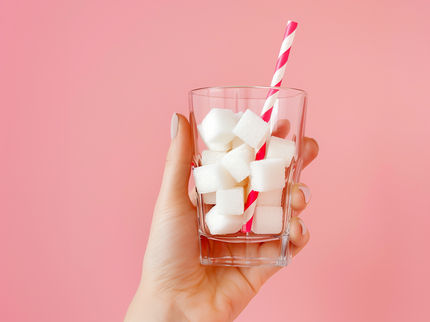Food labels: How to recognize sugar traps
Hearty dishes can also contain sugar
Up to 22 grams of sugar can be found in 100 milliliters of a commercially available salad dressing, says the Bavarian Consumer Association. This corresponds to more than seven cubes of sugar. The example shows: The sweetness is cleverly hidden in food. The pharmacy magazine "diabetes Ratgeber" gives tips on how to unmask camouflage names, correctly interpret ingredient lists, study nutritional value tables - and avoid nasty surprises.
Interpreting ingredient lists correctly
There are around 70 ingredients that can conceal sugar. This includes everything that ends in "-ose". For example, glucose (dextrose), fructose (fruit sugar), glucose-fructose syrup, lactose (milk sugar) and maltose (malt sugar). Honey, barley malt extract, wheat dextrin, agave syrup, maple syrup, fruit concentrate, fruit puree, dried fruit such as raisins, sweet whey powder and skimmed milk powder are also mainly made from sugar.
The higher up the list of ingredients you see sugar, the more of it there is. Caution: If it does not appear on the list at all, the product may still contain a lot of it. It then comes from other sugary ingredients. Several sources of sugar are often added to a product. This reduces the individual proportions and the sweet substances slide further down the list of ingredients. This gives the illusion of a low-sugar product.
Hearty dishes can also contain sugar
According to the "Diabetes Ratgeber", you should also study the nutritional table. It reveals how much sugar is contained in 100 grams or 100 milliliters of a food, thus exposing sugar bombs. Caution: The amount per portion is often also stated. This gives the illusion of a low sugar content if the portion is unrealistically small, such as half a chocolate bar or 30 grams of cereal.
Incidentally, the claim "no added sugar" is permitted if no sugar or other sweetening ingredients, such as honey, have been added to the product. However, products can naturally contain a lot of sweetness, such as muesli with dried fruit or juices. A surprising amount of sugar is also often hidden in savory foods such as salad dressings, jarred or canned red cabbage, white cabbage salad, ketchup, meat salad, barbecue and pasta sauces, vegan meat alternatives and ready meals such as pizza. A glance at the nutritional table on the pack also reveals some hefty sugar traps.
Note: This article has been translated using a computer system without human intervention. LUMITOS offers these automatic translations to present a wider range of current news. Since this article has been translated with automatic translation, it is possible that it contains errors in vocabulary, syntax or grammar. The original article in German can be found here.
Most read news
Other news from the department business & finance

Get the food & beverage industry in your inbox
By submitting this form you agree that LUMITOS AG will send you the newsletter(s) selected above by email. Your data will not be passed on to third parties. Your data will be stored and processed in accordance with our data protection regulations. LUMITOS may contact you by email for the purpose of advertising or market and opinion surveys. You can revoke your consent at any time without giving reasons to LUMITOS AG, Ernst-Augustin-Str. 2, 12489 Berlin, Germany or by e-mail at revoke@lumitos.com with effect for the future. In addition, each email contains a link to unsubscribe from the corresponding newsletter.






























































